The Yaos, with a population of 2,134,013, are mainly distributed in Guangxi, Hunan, Yunnan, Guangdong, Guizhou and Jia ngxi provinces.
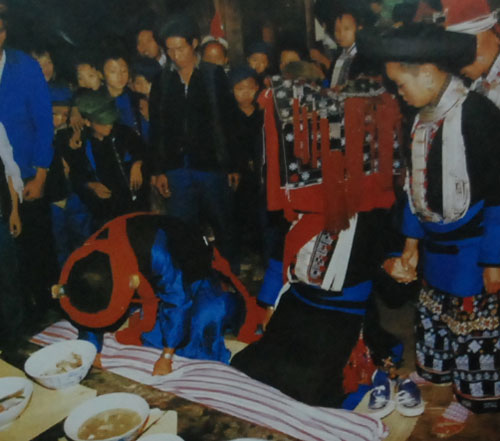
A wedding of the Yaos living in Jinxiu, Yunnan Province. The bride and groom undergo the kneeling rituals in the ceremonial hall.
Ancestors of the Yao people formerly inhabited the Changjiang River Basin. During the Qin and Han dynasties, they formed a part of the Changsha Wulingmans, also called the Wuximans. When these people moved southward, some tribes settled down in the southwest mountain areas. It is said that every peak of the Nanling Mountains is inhab¬ited by Yaos.
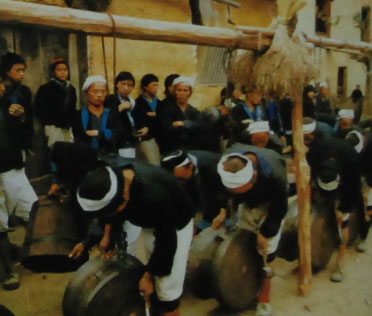
In the past, a bronze drum was the symbol of right among the Baiku (White Breeches) Yaos. It could only be beaten by tribe leaders. But now, during festivals and at ceremonies, a dozen of bronze drums, accompanied by leather drums, sound simultaneously. What an exciting scene!
The Yao people have their homes in subtropical mountain areas about 1,000 to 2,000 meters above sea level. Yao villages are usually surrounded by thick bam¬boo and trees. Different Yao tribes used to have different names in accordance with their tribal origins, occupations, attire and custom. Hence there were more than 20 branches among the Yao people such as the Pan Yao, Chashan Yao, Shanzi Yao, Ao Yao, Hualan Yao, Baiku Yao and Hongtou Yao. After the founding of new China, they were given a single appellation.
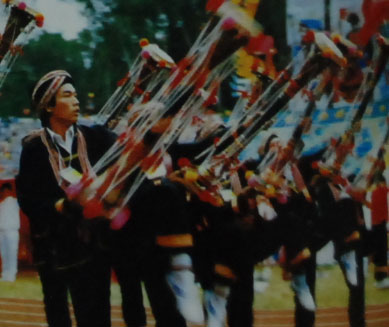
The Yaos celebrate the Bieh Huangh Festival with the Huangni Drum Dance.
The Yao language belongs to the Miao-Yao group of the Sino-Tibetan family. Owing to centuries of contact with the Hans, Miaos and Zhuangs, many Yao people speak the Chinese, Zhuang and Miao languages.
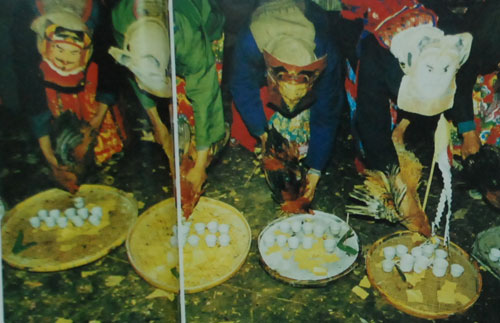
Shanzi Yao young boys, living in Dayao Mountains of Jinxiu, are normailly accepted as adults at the age of 15, when they begin o receive trust and respect from the community. A special rite is held to approve their adulthood. Firstly the young men cover their faces with masks and sacrifice roosters to their ancestors. Later, there young men must overcome great odds and ends before they are fully qualified to participate all the tribal activities.
Living in solitary mountains, most Yao people lead a primitive life, simply farming, hunting and fishing. Even in modern days, the Yaos still retain their ancient folk tales, beautiful songs, quaint dances, unique marriage, and faith. Yao women are noted for making elaborate brocade and colorful clothing.
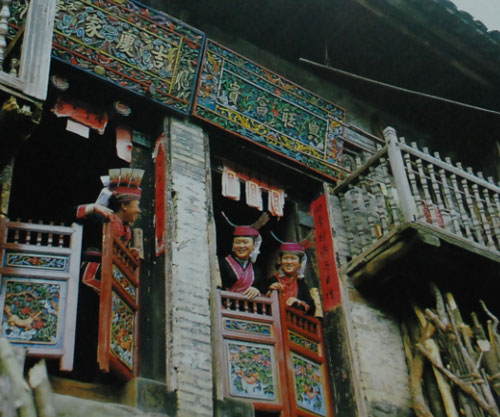
Houses built by the Chashan (Tea Hill) Yao people living in Dayao Mountains.
